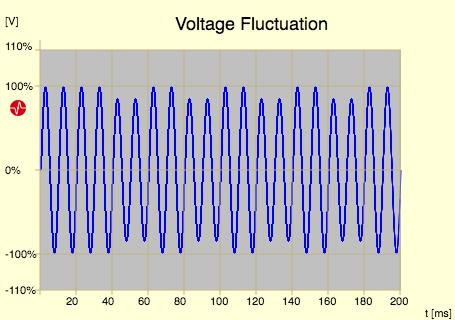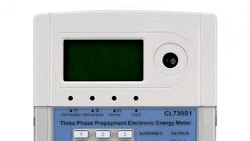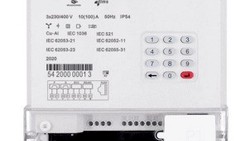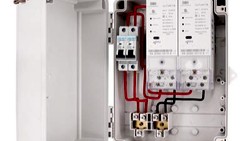Recently the question came up: "Can your energy meters measure flicker?"
Before we answer this, let's take a look on the causes and effects of flicker.
Rapid fluctuations in the power-line can cause a visible change of the brightness of a lamp.
You might have noticed this already when you read a book at night. The light goes darker and resumes to the normal brightness sporadic or cyclic. The light is flickering.
What is the cause for voltage fluctuation?

We have voltage fluctuations. The IEEE describes it as a series of random changes or repeated on a certain pattern.
The variation can change from 0.1% to 7% of the nominal voltage. The repetition frequency less than 25 Hz.
(The graphics shows 25 Hz, net frequency 50 Hz)
This cyclic amplitude change can be caused by e.g.
- Big motors under starting condition
- Static frequency converters
- Cyclo-converters
- Rolling mill drives for steel production
- Main spring winders
- Welders
- Elevators
- Cranes
- Transformer switching
- Capacitor bank switching
- Loose wiring connections
What are the effects?
The main effect is flicker. The permanently changing brightness of the light makes tired. You will be less concentrated at work. It can even cause migraines and epileptic shocks. Electrical equipment like UPS might switch to battery mode.
For most other electrical and electronic equipment the voltage fluctuation is harmless.
If you want the check the voltage fluctuation you need a power quality analyser. (Google for it). Note that not all devices have this special feature. A data logger is also helpful for research on which machinery is causing the flickering.
Can your energy meters measure flicker?
After the long story above we come back to the point. We are measuring the actual voltages and currents by sampling each cycle. Together with the phase shift our meters are calculating the power (P, Q, S). Over the time we have the consumed energy. So, our meters can measure accurate also when the grid has voltage fluctuation.
For flicker measurement you can use a flicker meter, which makes an optical analysis.
This post is extremely simplified to understand the basics.
Thank you for reading.
Editor's note: This article was originally published in July 2020 and has been updated for comprehensiveness.





All comments are moderated before being published. Inappropriate or off-topic comments may not be approved.